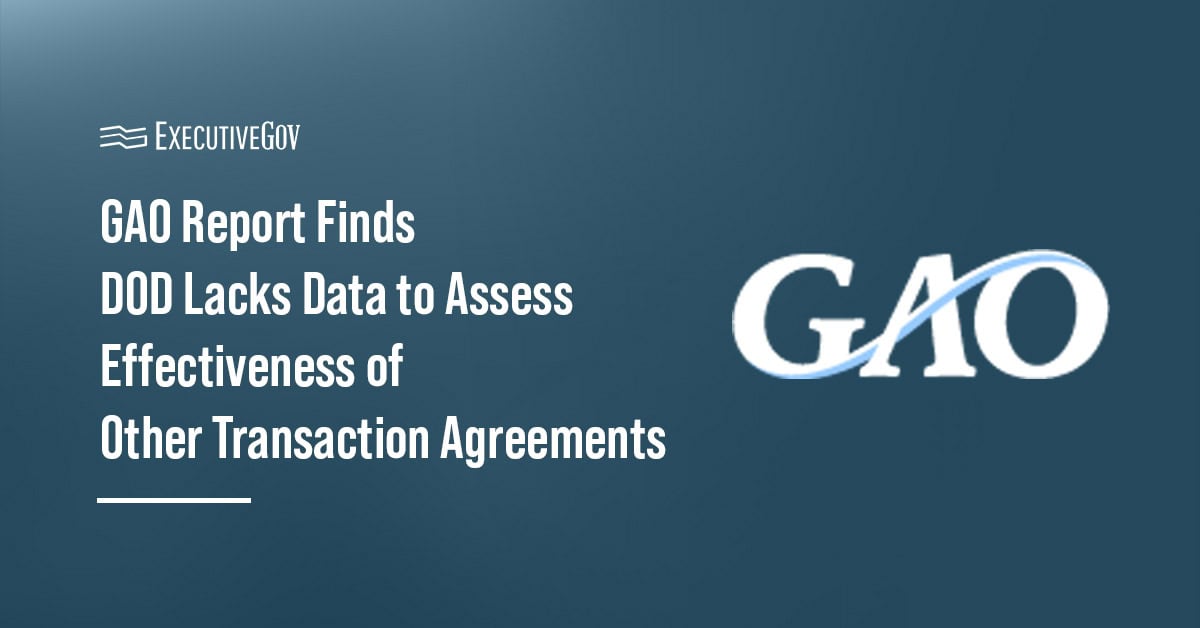The Department of Defense does not have the data that would enable decision-makers to determine if other transaction agreements, or OTAs, are working as intended, the Government Accountability Office revealed in a new report published Wednesday.
According to the congressional watchdog, while DOD tracks when a prototype OTA moves to production OTA, there is no process in place to monitor when the program switches to a standard contract.
Evaluating DOD’s Use of OTAs
OTA is a contracting mechanism that offers flexibility to support capability development. Officials use OTAs to customize the terms and conditions to protect the government’s interests. Non-traditional defense contractors that also do not typically do business with the government may choose to work with DOD under an OTA.
After the prototype phase, contractors may receive another OTA for large-scale production or a standard production contract subject to the Federal Acquisition Regulation.
Because OTAs come with risks, such as reduced oversight of contractor costs, defense officials may switch to standard contracts for capability production. In fact, of the 18 weapon system programs reviewed for the report, 10 are moving from prototype OTAs to standard contracts for production. Officials shared that standard contracts can mitigate overpayment.
The Pentagon systematically tracks prototype OTAs that turn into production OTAs. However, GAO discovered that the Defense Department does not track when prototype OTAs resulted in standard contracts for production.
GAO is recommending that DOD establish a systematic process for monitoring when prototype OTAs become standard contracts for production and report data fully and accurately. The Pentagon concurred.





